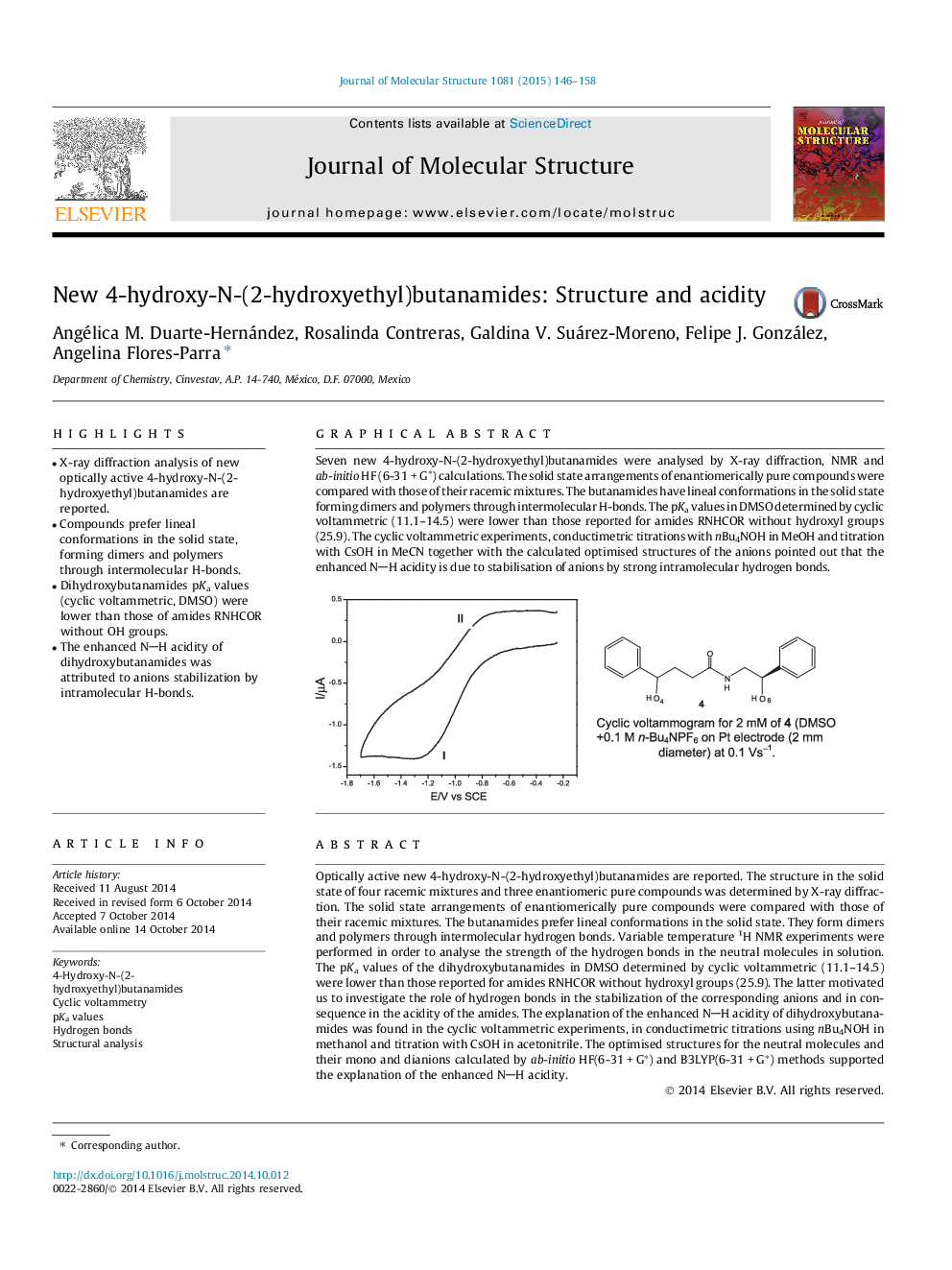| Article ID | Journal | Published Year | Pages | File Type |
|---|---|---|---|---|
| 1408317 | Journal of Molecular Structure | 2015 | 13 Pages |
•X-ray diffraction analysis of new optically active 4-hydroxy-N-(2-hydroxyethyl)butanamides are reported.•Compounds prefer lineal conformations in the solid state, forming dimers and polymers through intermolecular H-bonds.•Dihydroxybutanamides pKa values (cyclic voltammetric, DMSO) were lower than those of amides RNHCOR without OH groups.•The enhanced NH acidity of dihydroxybutanamides was attributed to anions stabilization by intramolecular H-bonds.
Optically active new 4-hydroxy-N-(2-hydroxyethyl)butanamides are reported. The structure in the solid state of four racemic mixtures and three enantiomeric pure compounds was determined by X-ray diffraction. The solid state arrangements of enantiomerically pure compounds were compared with those of their racemic mixtures. The butanamides prefer lineal conformations in the solid state. They form dimers and polymers through intermolecular hydrogen bonds. Variable temperature 1H NMR experiments were performed in order to analyse the strength of the hydrogen bonds in the neutral molecules in solution. The pKa values of the dihydroxybutanamides in DMSO determined by cyclic voltammetric (11.1–14.5) were lower than those reported for amides RNHCOR without hydroxyl groups (25.9). The latter motivated us to investigate the role of hydrogen bonds in the stabilization of the corresponding anions and in consequence in the acidity of the amides. The explanation of the enhanced NH acidity of dihydroxybutanamides was found in the cyclic voltammetric experiments, in conductimetric titrations using nBu4NOH in methanol and titration with CsOH in acetonitrile. The optimised structures for the neutral molecules and their mono and dianions calculated by ab-initio HF(6-31 + G∗) and B3LYP(6-31 + G∗) methods supported the explanation of the enhanced NH acidity.
Graphical abstractSeven new 4-hydroxy-N-(2-hydroxyethyl)butanamides were analysed by X-ray diffraction, NMR and ab-initio HF (6-31 + G∗) calculations. The solid state arrangements of enantiomerically pure compounds were compared with those of their racemic mixtures. The butanamides have lineal conformations in the solid state forming dimers and polymers through intermolecular H-bonds. The pKa values in DMSO determined by cyclic voltammetric (11.1–14.5) were lower than those reported for amides RNHCOR without hydroxyl groups (25.9). The cyclic voltammetric experiments, conductimetric titrations with nBu4NOH in MeOH and titration with CsOH in MeCN together with the calculated optimised structures of the anions pointed out that the enhanced NH acidity is due to stabilisation of anions by strong intramolecular hydrogen bonds.Figure optionsDownload full-size imageDownload as PowerPoint slide
